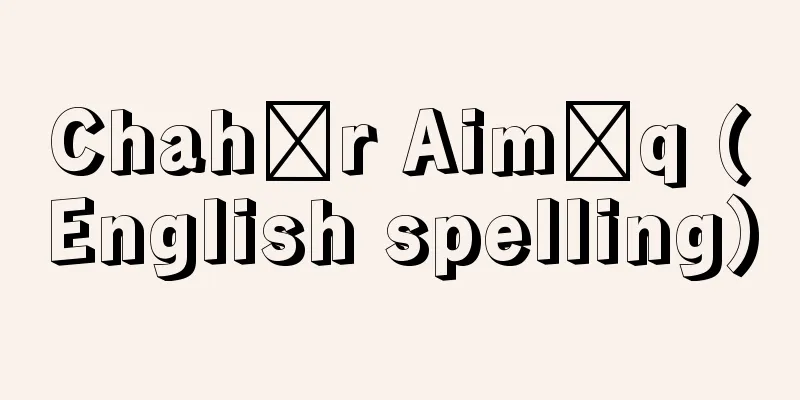Group song - Kumiuta

|
A Japanese musical term. It is the name of a type of jiuta and sokyoku music, which are distinguished by being called "shamisen kumiuta" and "koto kumiuta" respectively, but "kumiuta" usually refers to the latter. Both are the most classical songs in Japan, but their musical characteristics are different. They are called kumiuta because the lyrics of several existing short songs are combined into one piece and sung to the accompaniment of shamisen or koto, but later some songs were composed as kumiuta according to this format. Kumiuta were originally compulsory pieces for the professional rank of blind musicians, and as a training or license acquisition stage, shamisen kumiuta were divided into Omote-gumi, Hade-gumi, Ura-gumi, Naka-gumi, and Oku-gumi, while koto kumiuta were divided into Omote-gumi, Ura-gumi, Nakayurushi, Oku-go, and Hiki-gumi (the classification differs slightly depending on the school), so in this sense they are also called kumiuta (kumiuta in this sense also exist in kokyu music). In this case, koto kumiuta also includes danmono without vocals as tsukemono. The current schools of jiuta and sokyoku originally indicated the transmission routes of their respective kumiuta, and in jiuta, the Yanagawa school and the Nogawa school are separated by the lineage of shamisen kumiuta (also called "shamisen honte" meaning the standard shamisen traditional piece) including the Omote-gumi that was established around the Kan'ei era (1624-1644) (however, there are differences in the pieces). In sokyoku, the schools are said to have started with the transmission of the Yatsuhashi Jusan-gumi ("Fuki", "Ume ga e" and 11 other pieces), which was completed around the Keian era (1648-1652) by Yatsuhashi Kengyo, but kumiuta compositions continued to be composed by the various kengyo after that, and it is said that new compositions were once banned in the mid-Edo period. Towards the end of the Edo period, the number of kumiuta compositions decreased, but among them, there were still kumiuta-style pieces written, albeit in a different style, such as Mitsuzaki Kengyo's Tenpo-gumi (referring to "Akikaze no Kyoku") and Yoshizawa Kengyo (II)'s Kokin-gumi (five pieces including "Chidori no Kyoku"). [Kuniko Yui] Source: Shogakukan Encyclopedia Nipponica About Encyclopedia Nipponica Information | Legend |
|
日本音楽用語。地歌、箏曲(そうきょく)の曲種名で、それぞれ「三味線組歌」「箏(こと)組歌」とよんで区別しているが、通常「組歌」というと後者をさす。いずれも日本における最古典の歌曲であるが、音楽的性格は異なる。既存の小編歌謡の歌詞をいくつか組み合わせて一曲にし、三味線あるいは箏の伴奏で歌うので組歌といわれるが、のちにはこの形式に従って組歌として作曲されたものもある。 組歌は、本来は盲人音楽家の職格のための必修曲であり、その伝授段階あるいは免許取得段階として、三味線組歌は表(おもて)組・破手(はで)組・裏組・中組・奥組、箏組歌は表組・裏組・中許(なかゆるし)・奥許・秘曲などに組分け(分類は流派により多少異なる)されたので、この意味でも組歌という(この意味での組歌は胡弓(こきゅう)楽にも存在する)。この場合の箏組歌には、歌のない段物なども付物(つけもの)として含まれる。 現在の地歌、箏曲の諸流派は、元来はそれぞれの組歌の伝承経路を示すものであり、地歌においては寛永(かんえい)(1624~44)ごろまでに成立した表組をはじめとする三味線組歌(三味線の伝承規範曲という意味で「三味線本手」ともよばれる)の伝承系譜をもって、柳川(やながわ)流と野川流に分かれる(ただし曲目に異同がある)。また箏曲においては八橋検校(やつはしけんぎょう)が慶安(けいあん)(1648~52)ごろに完成した八橋十三組(『菜蕗(ふき)』『梅が枝(え)』ほか11曲)の伝承を諸流派の始まりとしているが、その後も組歌の作曲が諸検校によって行われ、江戸中期には新作がいったん禁止されたともいわれる。江戸末期になると組歌の創作は少なくなったが、そのなかで光崎(みつざき)検校の天保(てんぽう)組(『秋風の曲』のこと)や、吉沢検校(2世)の古今組(『千鳥の曲』など5曲)など、異系統ではあるが、組歌形式の楽曲もつくられている。 [由比邦子] 出典 小学館 日本大百科全書(ニッポニカ)日本大百科全書(ニッポニカ)について 情報 | 凡例 |
Recommend
Cloaca Maxima
…In ancient Rome, systematic urban development le...
Scale - Memori
〘noun〙 The act of putting marks on measuring instr...
Pedicularis apodochila (English spelling)
… [Kei Yamazaki]. … *Some of the terminology that...
Gang Moa - Gang Moa
...The mowing width varies from about 20 cm for h...
Kawasaki Ship
〘Noun〙① A relatively large fishing boat used in th...
Kardec, A.
…On the other hand, the old mysticism, which was ...
Chrysanthemum foliar nematode (leaf blight nematode)
A nematode of the Aphelenchoidae family. It is a n...
Jirocho Shimizu - Jirocho Shimizu
Year of death: June 12, 1893 (Meiji 26) Year of bi...
Strait of Ere - Erekaikyo
...a strait between the Jutland Peninsula and Swe...
Ruhlman, J.E.
…A decorative style from the 1920s and 1930s, cen...
Rock fall
The term "rockfall" generally refers to...
Pseudophyllophora - Pseudophyllophora
...When this final developmental form is ingested...
Iranian Revolution
This revolution took place on February 11, 1979, ...
Dental alloys
Alloys used to repair teeth. Metal materials are u...
Oaka - Oaka
...They are caught by fishing and in fixed nets. ...









